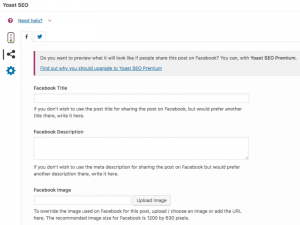
When companies come into being, they usually have very specific ideas about their customers: what age they are, how much they make, etc. My question to you as a salesperson (and hopefully as someone who is interested in Social Selling) is, “If a company’s owner or management takes the time and energy to determine this, why shouldn’t you?”
Determining your buyers’ persona (or personas) is an important part of this process. But you also need to be concerned with engaging them at not only the right time, but the best time.
Have you ever worked hard to get a meeting with a person or company you thought was perfectly qualified, only to find out they’ve already obtained whatever it is you’re selling from another salesperson or vendor? Frustrating, right? You’ve spent a lot of time prior to the meeting with your sales prep, only to be shot down before you even begin.
This is why I think the best time for that engagement is before they even need your product or service.
And this is where Social Selling really shines.
Instead of wasting that prep time, use it for what I call “prior engagement” in Social Selling. Prior engagement is the process a Social Seller goes through to attract prospects to her or him before said prospects are ready to buy. It also builds a Social Seller’s “thought leadership” in whatever field or vertical they serve with your products and/or services. If done right, Social Sellers may not even know the specific identities of your prospects prior to being contacted.
Identify Their Triggers
To be in that “prior-engagement” zone, you first need to identify three triggers your prospects need to pull prior to them even thinking about a purchase from you:
Who does your client hire before they need you? Example: If you sell office furniture, your future client is already talking to commercial real-estate agents, architects, telecom companies, IT firms, office-supply companies, recruiters and so on.
What conversations are your prospects having internally that leads up to your solutions? Continuing our office-furniture example, they’re talking about expansions, new hires, moving, mergers, etc.
What questions and challenges will your prospect be facing when deciding how and what to purchase? With office furniture, they’re concerned about quality, quantity of pieces needed, functionality, budget, style… the list goes on.
Develop the Right Content
After you’ve ID’d those triggers, you need to develop insights that provide your prospects with the right questions ask and the pitfalls to avoid. The tactics and strategies you proactively offer to solve their problem will draw them toward you to start a conversation. After all, you’ve proven you will provide value to them during your talk.
The next step is to develop the content that supports those insights. This is where both LinkedIn and your thought leadership come in. Here are five steps to engage on LinkedIn:
1. Find and connect with the right decisions makers and influencers on LinkedIn. At this point you won’t know if and when they will need you, but this is about filling the very top of the sales funnel and providing the right content to get the ones that are ready to raise their hand.
2. Use Google Alerts and/or LinkedIn’s Sales Navigator (Premium product) to keep tabs on your prospects’ articles, activities and announcements. Look for triggers that arise and reach out to them at appropriate times.
3. Write LinkedIn Published Long-Form Posts (think blogging, but on LinkedIn). This is where a lot of your pre-engagement content will be used, so it is vital this content is meaningful to your prospect. When you post, all of your connections will receive a notification of your publication; if it relates to their needs, they will click through to read your insights. If you have a strong call-to-action in your content, you will convert those readers into phone calls.
4. Find excellent articles, blog posts and other content (that’s not necessarily yours). Again, those articles should “pull” your prospects’ triggers, as you determined in your prior-engagement research. Then share that content on your LinkedIn Newsfeed.
(Here’s an advanced tip: Share your Newsfeed articles directly with your prospects in a LinkedIn message:
George: As a CEO of a growing company, I thought I would share with you this great article on how to engage and hire productive employees. Please let me know if you find it useful.
Don’t overuse this one, though.)
5. Develop relationships with strategic alliance partners and other vendors that your prospects work with before they need you. Create a networking group with select referral sources with whom you can all benefit from strategic introductions.
By using the prior-engagement strategy, you can attract prospects you may not even know exist at the best time for them… just before and/or when they need you!
Digital & Social Articles on Business 2 Community(82)






